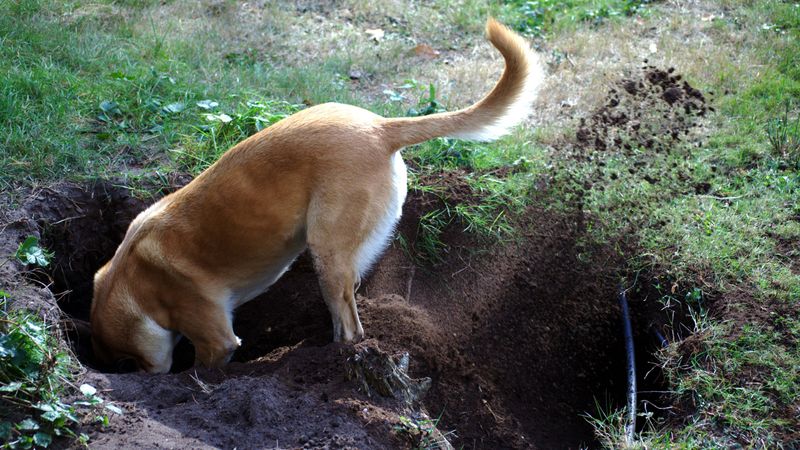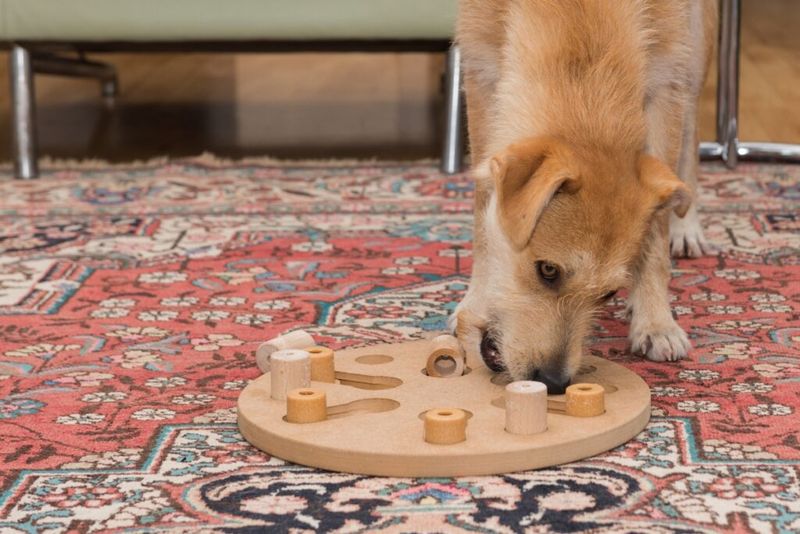Dogs, much like humans, can experience boredom, leading to various behavioral issues. Understanding the signs of boredom and how to address them is crucial for maintaining a happy and healthy canine companion. This guide explores thirteen distinct ways to identify when your dog is bored and provides actionable solutions to keep your pet engaged.
Chewing Everything
Have you ever walked into a room to find your favorite shoes in a shredded mess? This could be a clear sign of your dog’s boredom. Chewing is a natural behavior, but excessive destruction often indicates a need for mental stimulation.
Try offering a variety of chew toys and rotating them to keep your dog interested. Engage in interactive play with your furry friend to redirect that gnawing energy towards something positive.
Remember, a well-exercised dog is a happy dog. Regular walks and playtime are essential to curb this destructive habit.
Excessive Barking
Does your dog bark at every passerby or seemingly nothing at all? This might be a symptom of boredom. Dogs often resort to barking to express their pent-up energy and seek attention.
Training your dog to understand ‘quiet’ commands can be a helpful solution, along with providing engaging toys that challenge their minds.
Enrichment activities, such as puzzle toys or hide-and-seek games, can help reduce your dog’s need to bark excessively and keep them entertained throughout the day.
Digging Holes
Ever find your yard full of unexpected craters? Digging is a natural instinct for dogs, but excessive digging can be a sign of boredom. This behavior not only disrupts your garden but can also be your dog’s way of seeking attention.
To address this, allocate a specific area where your dog is allowed to dig. Encourage this behavior in the designated spot.
Interactive toys and regular exercise can also help mitigate your dog’s urge to dig randomly and keep them physically and mentally active.
Pacing or Restlessness
Dogs that pace or appear restless may be telling you they’re bored. This behavior often suggests a lack of stimulation or exercise.
Consider increasing the length and frequency of walks to burn off excess energy and provide mental engagement through training exercises.
Additionally, incorporating scent games or agility courses at home can offer the mental stimulation your dog craves, helping to reduce restlessness.
Overeating
Is your dog constantly begging for food, even after finishing a meal? Overeating can be a sign of boredom when dogs eat not out of hunger, but because they have nothing else to do.
Introduce a feeding schedule and stick to it to help manage their food intake. Combine this with portion-control feeders to slow down eating.
Incorporating more playtime and activities can distract your dog from food and help maintain a healthy weight.
Destructive Behavior
A bored dog can quickly turn into a destructive one. Torn furniture, shredded pillows, and chewed-up shoes are all signs of a dog seeking stimulation.
To combat this, ensure your dog gets plenty of exercises and provide a variety of toys that cater to different play styles.
Training and engaging activities, like agility or obedience classes, can also channel your dog’s energy into more positive outlets.
Sleeping More Than Usual
While dogs do sleep a lot, excessive sleeping can sometimes indicate boredom. If your dog seems to sleep more than usual, it might be because they aren’t mentally or physically stimulated enough.
Try breaking up their nap time with short, engaging activities that stimulate their mind and body.
Regular play sessions and interactive toys can help keep your dog awake and engaged, preventing prolonged periods of inactivity.
Following You Everywhere
Does your dog follow you from room to room? While it can be endearing, it may also suggest that they’re bored and seeking attention.
Provide them with activities they can enjoy independently, such as puzzle feeders or chew toys.
Structured alone time can help your dog feel more comfortable being by themselves, reducing the need to follow you everywhere.
Licking Excessively
Excessive licking, especially of paws or furniture, can be a sign of boredom or anxiety in dogs. This repetitive behavior can lead to sores or infections if not addressed.
Diversify your dog’s daily routine with new activities and toys to keep their mind engaged and alleviate boredom.
Regular grooming and vet checks are also important to ensure there’s no underlying medical issue causing the behavior.
Ignoring Commands
If your previously obedient dog starts ignoring commands, it may be due to boredom. Lack of mental engagement can cause dogs to lose interest in training.
Reintroduce training sessions with positive reinforcement to rekindle their focus and excitement.
Incorporating fun and varied exercises will help maintain your dog’s interest and obedience, keeping them mentally active and responsive.
Clinginess
Dogs can become clingy when they are bored and seeking attention. If your dog suddenly becomes inseparable, it might be a cue for more interaction.
Engage them in activities that they enjoy and encourage independent play with stimulating toys.
Balancing bonding time with alone time can help your dog feel secure and reduce clinginess, promoting healthy independence.
Tail Chasing
Tail chasing might seem amusing, but it can be a sign of boredom in dogs. This behavior often indicates a need for more activity and mental stimulation.
Introduce new games and interactive play to redirect this energy to more productive outlets.
Regular outdoor activities, such as fetch or running, can provide the necessary stimulation to reduce tail-chasing habits.
Escape Attempts
If your dog is constantly trying to escape the yard, it might be a sign of boredom. Dogs seek new adventures and experiences, and an unstimulating environment can lead to escape attempts.
Enhance your dog’s environment with toys and activities that cater to their interests.
Regular walks, social interactions, and new experiences can curb your dog’s desire to escape and keep them happily entertained at home.













